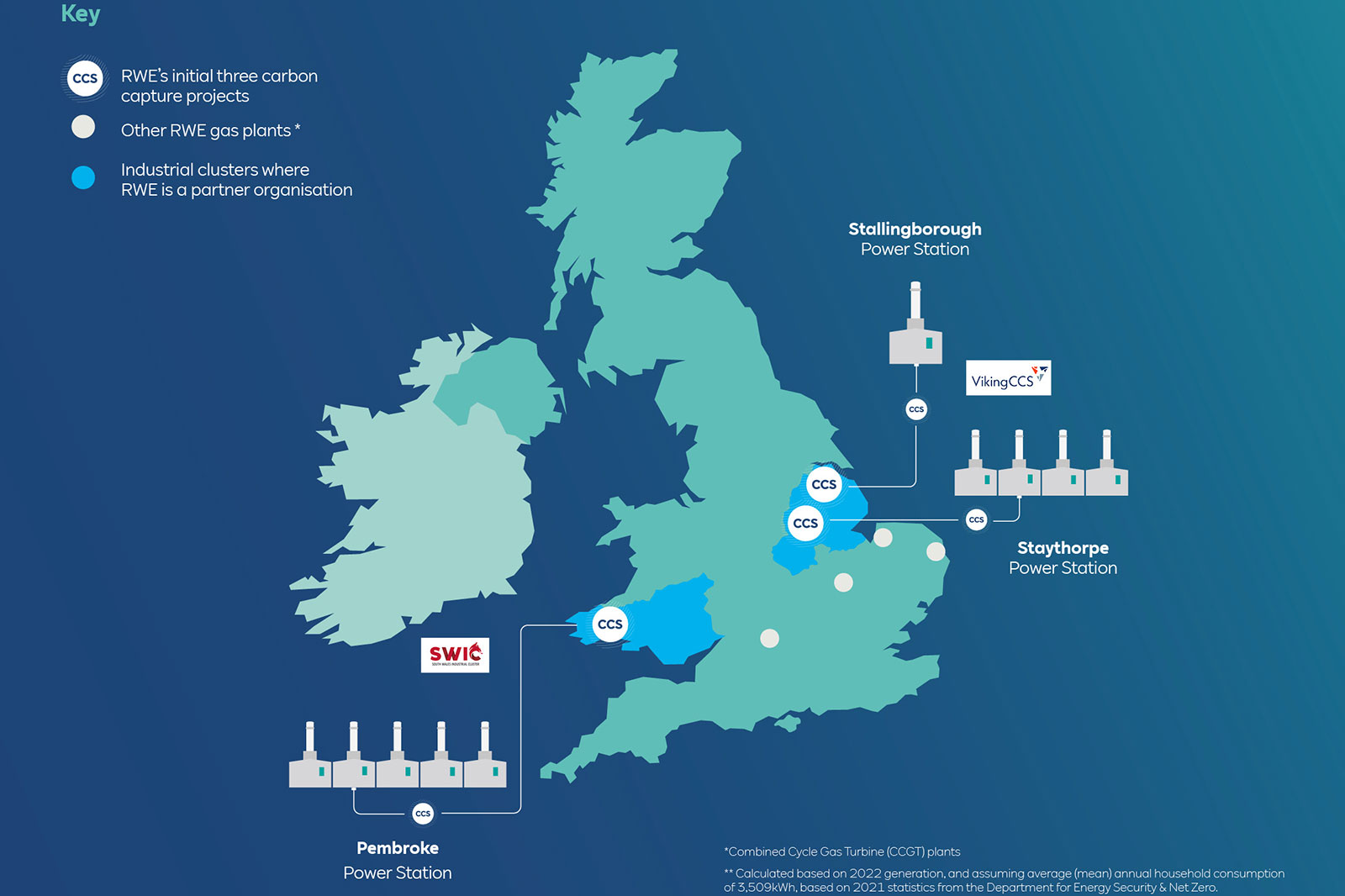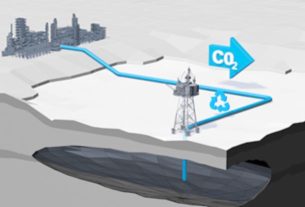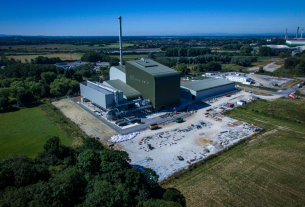United Kingdom – RWE is paving the road to help decarbonize UK power by moving forward with three new carbon capture projects.
At its current combined cycle gas power facilities in Pembroke and Staythorpe, the business is evaluating the viability of options to retrofit carbon capture technology. Additionally, it is creating plans for a new gas-fired power plant with carbon capture at Stallingborough, close to the Humber Estuary. One million houses might be powered by the potential development’s up to 800 megawatts of power.
RWE views carbon capture and storage (CCS) as a practical option for delivering decarbonized, dependable, and dispatchable power generation, supporting the UK’s goal of decarbonizing its power system by 2035. RWE operates the largest fleet of gas-fired power stations in the UK and is a top producer of renewable energy. The three proposed CCS projects will be crucial to RWE’s global objective to become carbon neutral by 2040, goals in line with the Paris Agreement, as well as to the long-term energy security of the UK.
Decarbonization
A strong and complete energy network that guarantees the UK has reliable and secure generation whenever it is needed would be made possible by the construction of these projects. If all three projects move forward, they would be able to secure up to 4.7 gigawatts (GW) of flexible, decarbonized generation capacity, or 8.1 million typical UK homes’ worth of electricity, while also capturing 11 million tonnes of CO2 annually, or the equivalent of taking 2.2 million gasoline cars off the road. The projects would contribute significantly to the UK’s energy infrastructure and be a crucial factor in the decarbonization of nearby industrial clusters.
CO2 transportation and storage
All three projects are near existing CO2 networks or will have access to shipping ports, allowing for the secure transportation and storage of CO2 by outside parties. To create these storage and transportation possibilities, RWE has partnered with the industrial clusters South Wales Industrial Cluster (SWIC) and Viking CCS. Options for using the CO2 that has been captured will be sought out whenever possible.
The projects are currently getting ready to submit funding applications for Track 2 Phase 2 cluster sequencing financing, which is intended for carbon capture projects located close to carbon capture storage or transport facilities. By submitting the application, RWE will be able to prove that carbon capture is a workable solution and an important instrument in the drive to net zero.




